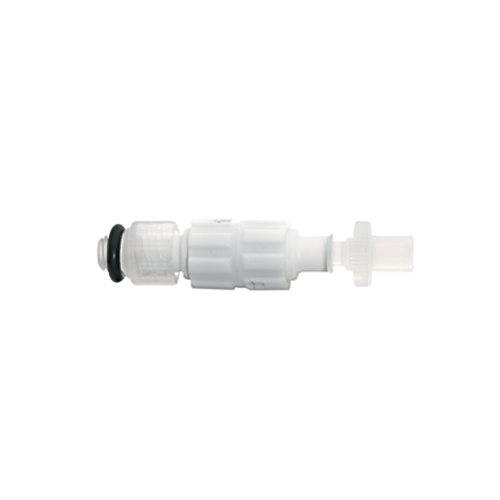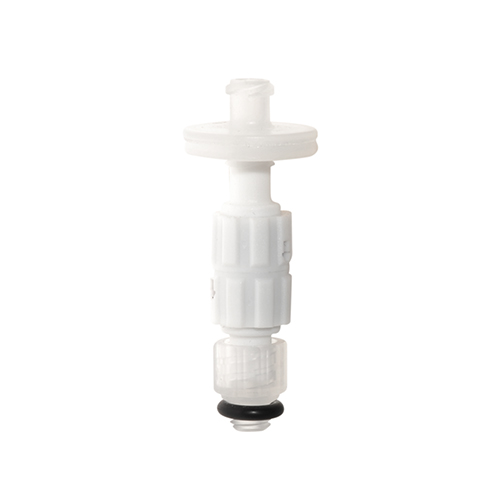Safety Air Inlet Valves
Prevent evaporation of volatile compounds into the air, increase composition stability resulting in constant retention times, and prevent bacterial contamination.
Overview
To prevent evaporation of mobile phase liquids, use a safety air inlet valve. The valves fit into one port of a safety cap or VICI cap that is being used for solvent delivery, helping to provide constant retention times and better composition stability. A check valve prevents vapors from escaping the lab, and a 0.2 µm filter prevents bacterial contamination.
The check valve regulates the pressure when the negative pressure reaches 1.5 psi or 0.1 bar. This slight negative pressure prevents evaporation of the liquid (lower vapor pressure) and still guarantees the stability of the flow rate. However, a negative pressure that is too high can influence the aspiration of a constant flow.
Several tests have indicated that the 0.2 µm cellulose filter will keep liquid free of bacteria and dust particles over time. If you use a filter and still have bacteria growth in your liquid, it is likely due to the presence of bacteria in the deionized water used.
Air inlet valves fit any VICI cap or VICI safety cap.
The air inlet valve is not suitable for use with helium sparging. For helium sparging, use a Safety Air Outlet Valve.
- We recommend that the safety air inlet valve be replaced every 6-7 months to guarantee the correct operation of the check valve. The lifetime of the check valve and the filter depends on the intensity of use and ambient air quality.
Specifications
Materials:
| Housing | Polypropylene |
| Filter | Cellulose |
| O-rings | EPDM (not a wetted part) |
Connections:
| 1/4-28 | Valve to cap |
| Female Luer | Filter |
More information about the chemical resistance of these materials:
VICI Jour also offers ...



